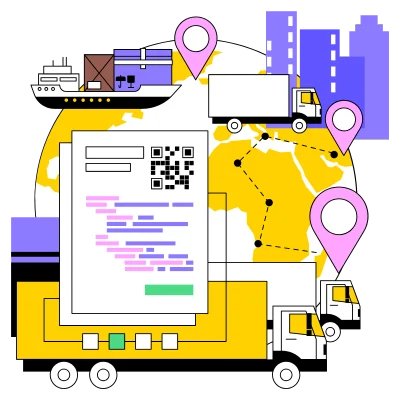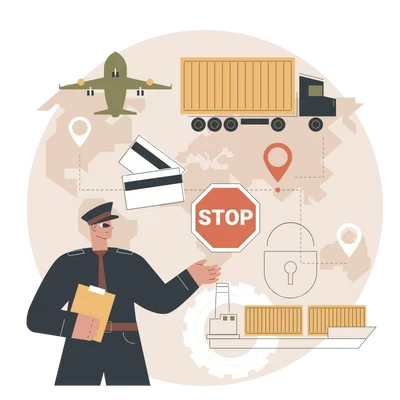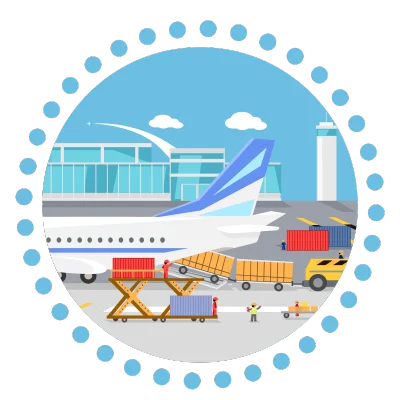LTL Freight
The Ultimate Guide
by Abdullah Faraz, April 22, 2025
Reviewed by Ford, Dispatch Specialist
This is a complete guide to LTL freight.
In this comprehensive guide, you’ll learn all about:
- LTL freight basics and how it works
- Its benefits and comparison with FTL
- LTL Freight Costs and Pricing with common issues
- LTL Freight Carriers and Companies
- LTL Freight Careers
- LTL Freight Industry Stats
- Lots more.
So if you want to ship your goods using LTL freight or are considering a career in it, you should get a lot of value from today’s guide.

Contents
Chapter 1
What is LTL Freight?
Let’s kick things off with a chapter on the basics.
Specifically, in this chapter, I’m going to cover the definition of LTL freight, its working model, differences with FTL freight, and more.
I’ll also show you what is (and isn’t) considered “LTL freight”.
Let’s dive in.
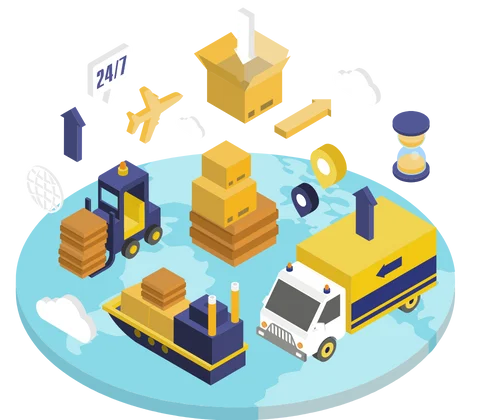
LTL Freight Meaning and Definition
LTL (Less Than Truckload) Freight refers to the transportation of goods that do not fill an entire truck or trailer. Instead of paying for the full capacity of a truck, shippers share space with other shipments going to the same or nearby destinations.
LTL freight is used when goods are too large to be shipped as a parcel and do not require space for a full trailer.
Example: If a company needs to ship a 500-pound load, instead of paying for an entire truck, they can book just the space they need with LTL.
One more example: A small e-commerce business might need to ship 10 boxes of inventory, but instead of filling a full truck, it can share space with other shippers’ cargo.
LTL freight works within four core steps: pickup, consolidation, transit, and final delivery. More on it later.
Difference Between LTL and FTL Freight
There are five key differences between LTL and FTL freight. Let’s break it down in a comparison table:
Feature | LTL (Less Than Truckload) | FTL (Full Truckload) |
Size | Ideal for smaller shipments that don’t require an entire truck. | Used for large shipments that require the full capacity of a truck. |
Cost | Shippers pay for only the portion of the truck they use. | Higher, as you pay for the entire truck regardless of how much space you use. |
Transit Time | Longer, due to multiple stops and transfers. | Shorter, as the truck is dedicated to one shipper’s goods. |
Shipment Type | Shared with other customers’ goods. | Only the shipper’s goods fill the entire truck. |
Handling | More frequent handling and potential transfers at terminals. | Less handling, direct route from origin to destination. |
What is the LTL Weight Limit?
You might be wondering how to determine which shipments are best suited for LTL or FTL.
Here is a simple rule: The LTL (Less Than Truckload) weight limit generally ranges between a minimum of about 100 to 150 pounds and a maximum of around 10,000 to 15,000 pounds per shipment.
Some carriers may accommodate shipments weighing up to 20,000 pounds, but this is less common and often requires special arrangements.
How Many Pallets is Considered LTL?
There is another way to determine whether you should choose LTL or FTL. This method is also useful for shippers and carriers, though it’s less commonly used due to its lower accuracy.
The number of pallets can also help determine the shipping type. If your shipments require 1 to 6 pallets, then go for LTL. Some carriers may allow up to 8 or even 10 pallets per shipment, but exceeding 6 pallets often requires special arrangements.
Chapter 2
Less-Than-Truckload Shipping Function
LTL freight works with four steps:
- Pickup: A carrier/truck driver picks up the goods from shipper/owner location.
- Consolidation: The carrier ships it to a terminal for consolidation with other goods that have the same delivery area. These shipments share a truck headed to the same or nearby destinations.
- Transit: The truck delivers goods to the regional terminal nearest the delivery location.
- Final delivery: Freight is separated based on destination at the distribution terminals. LTL carriers deliver the shipment to the destination location/drop-off.
Costs are determined by factors such as weight, dimensions, freight class, and distance.

Main Types of LTL Shipping
There are different types of LTL services depending on delivery speed, freight handling, and destination:
Type of LTL Shipping | Description |
Standard LTL | Regular delivery service with standard transit times. |
Expedited LTL | Faster delivery for time-sensitive shipments (often at a higher cost). |
Guaranteed LTL | Delivery by a specific date and time, with penalties if late. |
Refrigerated LTL | Temperature-controlled trucks for perishable goods. |
Volume LTL | For larger LTL shipments that are between regular LTL and FTL in size (typically 6+ pallets or over 5,000 pounds). |
Partial Truckload | Larger than typical LTL, but you still share space without a full load commitment like FTL. |
Example: A flower company might use refrigerated LTL to ship flowers across states without them spoiling.
LTL Freight Class and How It Works
The NMFTA (National Motor Freight Traffic Association) created a national standard to categorize goods for pricing and shipping, known as freight class.
There are a total of 18 classes that have numbers in their names, like class 50 to class 500, that represent special freight types.
Freight is assigned a class number based on density, handling, stowability, and liability. Lower-class freight is cheaper to ship than higher-class freight.
How It Works:
- Higher density (more weight in less space) = lower class = cheaper shipping.
- Lower density (large volume, light weight) = higher class = more expensive.
Factors That Determine Freight Class:
- Density (weight/volume)
- Stowability (ease of transport)
- Handling (fragile or hazardous goods)
- Liability (risk of theft, damage, perishability)
Example: Steel rods (dense, small) might be Class 50, while ping-pong balls (light, big) might be Class 500.
LTL Freight Class Chart Explained
Let’s get into LTL shipping classes with more details. Here’s a simple table to help you understand how this classification works:
Here’s a basic idea of how freight classes look:
Freight Class | Description |
50 | Extremely dense items (metal parts, bricks). |
55-85 | Semi-dense goods (books, bottled drinks). |
92.5-125 | Moderate density items (machinery parts). |
150-250 | Less dense (furniture, clothing). |
300-500 | Very light, bulky items (ping-pong balls, balloons). |
Tip:
- Lower classes = cheaper to ship.
- Higher classes = more expensive due to space taken up vs. weight.
What is the LTL Freight Class Calculator?
Online LTL freight class calculators make life easy and do a lot of work for you. These calculators determine the class using goods’ dimensions and weight. They estimate the density of freight and, with some mathematical calculations, recommend the appropriate freight class.
Example: Enter your box dimensions (40 x 48 x 48 inches) and weight (500 pounds), and the calculator determines your class is 85.
Chapter 3
Benefits and Drawbacks of LTL Shipping
LTL shipping is popular because it offers benefits that FTL doesn’t.
But at the same time, it has drawbacks that make the shippers confused in selecting the right freight type.
So this chapter will make it super easy to make an informed decision.
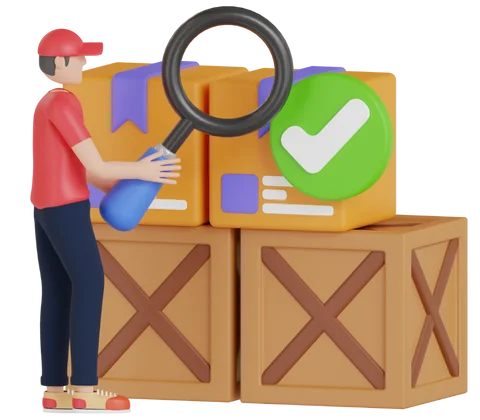
Advantages of LTL Freight
LTL freight has many benefits. Here are five key ones you don’t want to miss:
Cost-Effective for Small Shipments: As shippers pay only for the space their goods occupy instead of full truck space, it is a cost-effective solution for shipping.
Eco-Friendly: By consolidating multiple shipments into one truck, LTL reduces the number of trucks on the road, and it helps lower carbon emissions.
Flexibility: Frequent pickup and delivery schedules make it easier for businesses to ship smaller quantities more often rather than waiting for a full load.
Accessorial Services Available: LTL carriers offer services like liftgate delivery, inside pickup/delivery, and residential delivery, which can be tailored to specific shipping needs.
Reduced Inventory Costs: With the ability to ship smaller loads more frequently, businesses can lower their storage and warehousing costs.
Disadvantages of LTL Shipping
There is a rule of thumb. Everything has its benefits and disadvantages. If one thing is more beneficial for someone, but at the same time, it is more harmful for others. But understanding both sides makes it easier to adopt it or find alternatives.
Longer Transit Times: Since LTL shipments involve multiple stops and transfers, they usually take longer to reach their destination compared to Full Truckload (FTL) shipping.
Increased Risk of Damage: Goods face more frequent handling and transfers in LTL than in FTL shipping. These movements increase the chances of damage.
Higher Complexity: Coordinating LTL shipments can be more complicated, involving careful planning, classifying, and paperwork like Bills of Lading (BOL).
Accessorial Charges: Additional services (like inside delivery, limited access locations) may add hidden costs if not carefully managed.
Chapter 4
LTL Freight Costs and Pricing
If you are a shipper, broker, or carrier and have made the thoughtful decision about using LTL freight, then this is the time to move to the costs and pricing of LTL shipments.
Now we are going to discuss how you can estimate the cost of shipping, average cost per pound, or cost per mile. With that, here I’ve also included tips to help make LTL freight as affordable as possible.
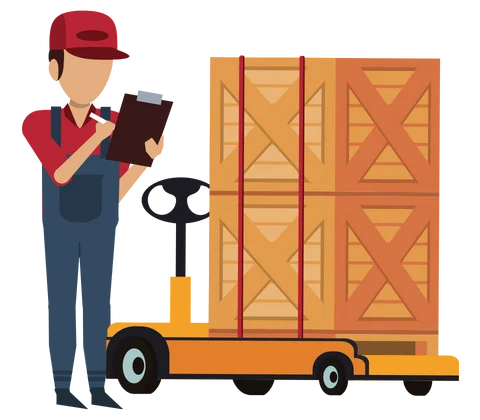
How to Calculate LTL Freight Rates?
Calculating LTL shipping rates can be tricky, but this six-step process will help you estimate costs.
- Freight Class: The classification (based on density, value, handling, and liability) determines the base rate. Higher classes are more expensive.
- Weight of Shipment: Heavier shipments generally cost less per pound, but more overall.
- Distance Traveled: The farther the shipment must go, the higher the cost.
- Origin and Destination: Deliveries to rural or limited-access areas cost more.
- Accessorial Charges: Extra services like liftgate delivery, inside pickup, or residential delivery add to the final price.
- Carrier Pricing Policies: Different LTL carriers use unique base rates and fuel surcharges.
Quick Tip: Always request quotes from multiple carriers and ask for a full breakdown of all fees to avoid surprises.
What is the Average Cost per Pound for LTL?
The average cost per pound for LTL freight shipping typically ranges between $0.15 and $0.30 per pound for standard shipments. However, depending on freight class, distance, and handling needs, rates can rise up to $0.75 per pound for lighter or bulkier freight.
How Much Does LTL Cost per Mile?
The average LTL (Less Than Truckload) cost per mile in the United States typically starts between $2 and $3 per mile. This rate can fluctuate based on several factors, including:
- Shipment weight and density
- Freight class (based on NMFTA classification)
- Accessorial charges (e.g., liftgate, residential delivery)
- Lane (origin and destination)
- Market demand and fuel prices
Cheapest LTL Freight Shipping Tips
Here are some proven tips to help you reduce LTL shipping costs. Implementing them can help you ship the goods at the best rates with no extra costs.
Consolidate Shipments: Combine multiple smaller shipments into one to take advantage of volume discounts.
Accurate Freight Classification: Ensure the correct freight class to avoid reclassification charges.
Efficient Packaging: Maximize space utilization to reduce dimensional weight charges.
Plan Ahead: Early booking can help secure better rates and avoid peak surcharges.
Compare Carrier Rates: Obtain quotes from multiple carriers to find the most competitive pricing.
Leverage 3PL Services: Third-party logistics providers may offer negotiated rates with carriers.
Negotiate Contracts: Regular shippers can negotiate long-term contracts for better rates.
Is It Cheaper to Ship TL or LTL?
LTL shipping is cheaper for small to medium shipments (typically under 10,000 pounds or less than 6 pallets). TL (full truck load) might be cheaper when you need full space in a trailer, or extra fast delivery, or facing accessorial charges in LTL.
Who Pays for LTL Shipping?
Typically, the shipper pays for LTL shipping. In B2B transactions, however, either the shipper or buyer may pay depending on the agreement. In retail and e-commerce, shipping costs are included in product prices (free shipping), but ultimately, the consumer indirectly pays.
Why is LTL so expensive?
LTL freight becomes expensive due to several factors that drive up shipping costs, such as:
- Market demand fluctuations
- Rising fuel prices
- Longer shipping distances
- Frequent handling and transfers
- Terminal operational fees
Each adds complexity and cost compared to full truckload shipping.
Chapter 5
Common Issues and Hidden Costs in LTL Shipping
When shipping via LTL (Less-Than-Truckload), it’s important to be aware of the hidden pitfalls that can increase your costs unexpectedly.
This chapter will help you understand the most common issues and can help you avoid unnecessary fees and shipping delays.
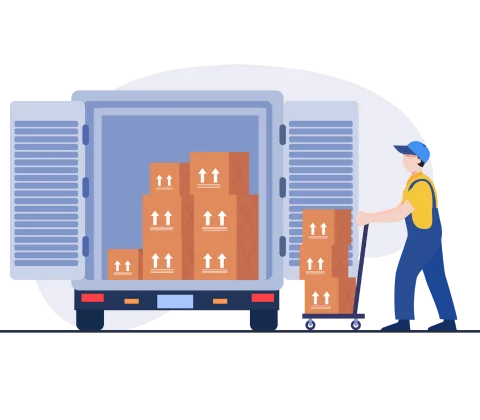
Reweighs and Reclassifications Explained
Reweighing and reclassification are major issues in LTL freight shipping.
What exactly happens?
LTL carriers routinely reweigh shipments and verify freight classes to ensure the accuracy of pricing. If your shipment’s weight or class differs from previous reports, you may face additional charges.
Common reasons for reweighs and reclassifications:
- Incorrect declared weight
- Improper freight class due to dimensions or product type
- Poor packaging or palletization can affect the classification.
- Missing documentation or bill of lading errors
Tip: Always weigh your pallets accurately and verify the correct freight class using a class calculator or NMFCC guidelines.
Common Accessorial Charges in LTL
Accessorial charges are additional fees added for services beyond standard dock-to-dock shipping. These costs can add up quickly if you’re not prepared.
Examples of common accessorial fees:
- Liftgate service
- Inside delivery
- Limited access locations (schools, farms, military bases)
- Residential delivery
- Appointment scheduling
- Reweigh and reclass fees
- Detention fees (waiting time charges)
Tip: Clarify any special services you might need when booking your shipment to avoid surprise accessorials.
How to Avoid Hidden Fees in LTL Freight
You can avoid many hidden fees by following best practices before and during shipping:
- Provide accurate shipment details: Weight, dimensions, freight class, and pickup conditions must be correct.
- Use proper packaging: Secure pallets, correct labeling, and protective wrapping reduce risks.
- Pre-arrange accessorials: Know if you’ll need liftgates, limited access delivery, etc., and quote them in advance.
- Work with a reputable broker or carrier: They help pre-plan and catch potential cost issues early.
- Double-check documentation: Accurate BOL (Bill of Lading) reduces reweighs and delays.
How to Dispute LTL Freight Charges
If you receive unexpected LTL charges, you have the right to dispute them.
Review the bill carefully: Identify exactly what extra charges appear.
Gather evidence: Photos of pallets, original weights, dimensions, and the signed BOL.
Contact your carrier or broker quickly: Many disputes have deadlines.
Submit a formal dispute: Include proof and a clear explanation.
Follow up persistently: Carriers can take time to respond.
Chapter 6
LTL Freight Services and Tools
This chapter includes curated lists of essential LTL freight resources, including:
- Top LTL freight companies
- Cheapest LTL carriers
- Leading freight brokers and freight forwarders
- LTL freight management software
- Favorite tools used by LTL carriers and drivers
- Popular load boards for LTL shipments
- Active forums and online communities related to LTL freight
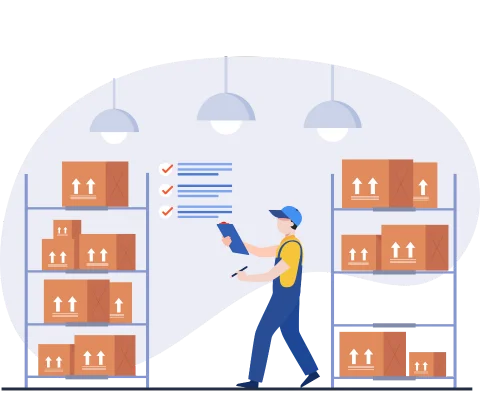
LTL Freight Carriers and Companies
Best LTL Freight Companies | Cheapest Carriers for LTL Freight | International LTL Freight Options |
FedEx | Roadrunner Freight | FedEx |
UPS | Magnum Freight | UPS |
XPO | Uber Freight | XPO |
Saia | CH Robinson | |
Estes | Amazon Freight LTL | |
ABF | ||
Dayton Freight |
Top LTL Freight Brokers, Forwarders, Software, Load Boards, and Forums
LTL Freight Brokers | LTL Freight Forwarders | LTL Freight Software Solutions |
Echo Global Logistics | DB Schenker | Freightview |
C.H. Robinson | Kuehne + Nagel | Shipwell |
GlobalTranz | Expeditors International | Kuebix TMS |
Mode Transportation | Flexport | Project44 |
Redwood Logistics | DHL Global Forwarding | MercuryGate |
LTL Freight Load Boards | LTL Freight Forums |
DAT Load Board | TruckersReport Forum |
Truckstop.com | Freight Relocators |
123Loadboard | The Truckers Forum |
Direct Freight | LTL Carrier Forums |
LoadMatch | Owner Operator Forums |
Top LTL Freight Brokers, Forwarders, Software, Load Boards, and Forums
LTL Freight Brokers | LTL Freight Forwarders | LTL Freight Software Solutions | LTL Freight Load Boards | LTL Freight Forums |
Echo Global Logistics | DB Schenker | Freightview | DAT Load Board | TruckersReport Forum |
C.H. Robinson | Kuehne + Nagel | Shipwell | Truckstop.com | Freight Relocators |
GlobalTranz | Expeditors International | Kuebix TMS | 123Loadboard | The Truckers Forum |
Mode Transportation | Flexport | Project44 | Direct Freight | LTL Carrier Forums |
Redwood Logistics | DHL Global Forwarding | MercuryGate | LoadMatch | Owner Operator Forums |
Chapter 7
LTL Freight Process: Tracking, Shipping, and Terminals
Let’s dig deep into this topic and uncover some common and highly important points that are directly related to LTL freight.
This chapter will cover the following subtopics:
- Tacking
- Shipping
- Terminals
LTL Freight Tracking: How to Track Your Shipment
LTL freight tracking is relatively simple and straightforward. You are provided with a tracking code or PRO number (Progressive Rotating Order) that you can use on the carrier’s website. Some carriers also provide a customer portal where you can track real progress.
You can track shipment pickup confirmation, current location, estimated delivery time, and proof of delivery.
How to Drop Off a Pallet at the LTL Freight Terminal
If you are handling your own shipping, you might need to drop off your pallet directly at a carrier’s terminal.
Steps to follow:
Prepare your pallet properly: Make sure the freight is shrink-wrapped, labeled, and stable.
Bring your Bill of Lading (BOL): This document is essential. It outlines what is being shipped and identifies the parties involved.
Drive to the correct terminal dock: Check in with the terminal office before unloading.
Terminal staff will assist: They will direct you where to leave the freight and may inspect the shipment.
Do LTL Carriers Have Pallet Jacks?
Yes, most LTL carriers have pallet jacks to facilitate their customers, but these pallet jacks are used inside the terminal. So you may need pallet jack service at pickup or drop-off, which can increase the costs.
One more thing to know is that not all delivery trucks (especially liftgate trucks) are equipped with pallet jacks unless specifically requested.
LTL Freight Shipment Handling and Transit Times
As of 2025, Less-Than-Truckload (LTL) freight transit times have remained relatively consistent, with minor variations due to regional factors and carrier-specific operations. Even though some carriers offer next-day LTL freight, it is typically available only for short-haul distances.
LTL Freight Transit Times Overview
- Short-Haul Shipments (Under 500 miles): Typically delivered within 1 to 2 business days.
- Mid-Range Shipments (500–1,500 miles): Generally take 2 to 4 business days.
- Long-Haul Shipments (Over 1,500 miles): Usually delivered within 4 to 6 business days.
These estimates can vary based on factors such as carrier network efficiency, weather conditions, and regional infrastructure.
Chapter 8
Handling Freight Damage in LTL Shipping
As we have discussed earlier, FTL freight is safer because the load is loaded in a trailer and delivered to the drop-off location. But in LTL shipping, the shipment goes to one terminal, where it is loaded onto another truck and sent to the next terminal. From that terminal, it is loaded onto another truck and shipped to you.
The frequent movement (loading, unloading, terminal sorting, and cross-docking between trucks) increases the risk of damage to goods, but taking effective safety measures can help reduce this risk.

Tips to Minimize Freight Damage During Shipping
While you can’t control every movement, you can dramatically lower the risk of damage by:
Proper Packaging: To reduce the shocks, always double-box fragile items and use internal cushioning like foam or air pillows.
Secure Palletization: Stack items tightly on a high-quality pallet
Clear Labeling: Label all sides with handling instructions (“Fragile,” “This Side Up,” etc.).
Avoid Overhang: Ensure no product extends beyond the pallet edges.
Choose the Right Carrier: Opt for carriers with a strong reputation for careful handling (more on that below).
Partial Loads: When possible, book a partial truckload to minimize transfers and reduce exposure to rough handling.
Best LTL Carriers for Fragile Shipments
Choosing the right LTL carrier can make or break your shipping experience. Based on extensive feedback from shippers and brokers, the top recommendations include:
- Old Dominion Freight Line (ODFL)
- R+L Carriers
- Forward Air
- Regional Specialists
In LTL shipping, proper packaging isn’t optional; it’s essential. Carriers legally assume minimal liability if you do not protect your freight adequately. That means if your shipment gets damaged but was poorly packaged, insurance claims could be denied.
Should You Let Customers Book Their Own LTL Freight?
No, you shouldn’t let your customers book their own LTL freight. They don’t understand LTL freight and often choose cheap carriers.When these carriers are handled improperly and customers fail to pack goods carefully, shipments get damaged and they blame your company.
Why Having a Freight Manager Saves You Money
A good freight manager (whether in-house or outsourced) isn’t just a cost. They’re an asset that saves money by:
- Negotiating better rates and accessorial charges
- Choosing the right carriers for each type of freight
- Avoiding costly shipping mistakes and damages
- Handling claims efficiently when problems arise
- Optimizing scheduling for faster delivery and less detention
LTL Freight Insurance: What You Must Know
Standard LTL carrier liability is low and limited, often based on weight, not item value. That means if your $10,000 item weighs 200 pounds, the carrier might only pay out a few hundred dollars for a damage claim.
To protect yourself:
- Always buy third-party freight insurance for valuable or fragile loads.
- Verify coverage amounts and ensure the policy covers “full replacement value.”
- Understand claim timelines: Claims typically must be filed within a few days after delivery.
- Document everything: Take photos before shipment and at delivery if damage occurs.
Chapter 9
LTL Freight Careers, Salaries, and Carrier Operations
This chapter is dedicated to those who want to build their careers in the trucking industry, specifically in LTL freight.
It also summarizes data taken from discussions on LTL freight forums, featuring real-world experiences and problems.
Let’s get into it.

Top LTL Freight Companies to Work For
Here are the leading LTL carriers recognized for strong workplace reputations, competitive pay, and operational excellence, based on recent industry reports and employee feedback:
- Old Dominion Freight Line (ODFL)
- XPO Logistics
- FedEx Freight
- ABF Freight (ArcBest)
- R+L Carriers
- Saia Inc.
- Estes Express Lines
- TForce Freight (TFI International)
LTL Freight Salary Insights (Including Saia)
Here’s a breakdown of LTL driver salaries in 2025, with specific data for Saia LTL Freight and industry-wide comparisons:
General LTL Driver Pay
- Average hourly rate: $24.04–$41.35 (majority range), with some roles reaching $89.66/hour for specialized positions.
- Annual salary:
- LTL-specific: $78,621 average (per altLINE data).
- Broader trucking: $94,763 average across all categories, with top earners exceeding $150,000 in specialized roles like crude oil transport.
Saia LTL Freight Salaries
- Local drivers: $75,000–$88,589 annually (~$33.19–$42.60/hour).
- Long-haul drivers: Up to $91,740 annually.
- Team drivers: ~$266/day (~$69,000 annually at full-time rates)
How Do LTL Carriers Make Money?
LTL (Less-Than-Truckload) carriers make money by consolidating multiple shipments from different customers into a single truckload while optimizing both space and routes.
They generate revenue through four main income streams:
- Base Freight Charges: Calculated by distance, weight, freight class, and volume.
- Accessorial Fees: Extra charges for liftgate services, inside delivery, residential pickup, reweighs, reclassification, and more.
- Fuel Surcharges: Added to shipments to offset fluctuating diesel costs.
- Cross-Docking and Terminal Handling: Carriers use hubs where freight is sorted and moved between trucks.It minimizes empty miles and maximizes truck usage.
How to Get an LTL Contract?
If you’re a shipper and want to get a quote or contract, you need to build a good relationship with brokers. If you provide all the necessary details to a carrier about your shipment, they will provide you with a quote.
Determine how much volume you want to ship on a weekly basis.Request pricing proposals, negotiate terms, and consider working with a 3PL.
If you are a driver looking to work with a carrier, find a reputable company and pursue it as a full-time job. In FTL, drivers often run their own businesses and choose their loads freely, but in LTL, drivers typically work as employees with set job roles.
What is Linehaul in LTL Freight?
In LTL freight, Linehaul refers to the long-distance movement of freight between two carrier terminals. This movement is usually along highways or major transportation corridors.
Key points about Linehaul:
- It’s terminal-to-terminal (not customer pickups or deliveries).
- Drivers often haul double trailers (pups) to maximize efficiency.
- It operates mostly during overnight hours to avoid traffic.
- Loads are usually sealed and rarely touched between pickup and delivery terminals.
In simple terms, a truck driver covers long distances between cities, states, and regional hubs.
What is P&D (Pickup and Delivery) in LTL Freight?
P&D stands for Pickup and Delivery. It involves a driver picking up goods from shippers and delivering them to receivers, usually within local or regional areas. In P&D freight, the driver delivers the shipment in the morning, picks new loads in the afternoon for the next day’s delivery.
Drivers cover distances between 50 to 100 miles and work closely with dock workers, warehouse staff, and business owners.
Which LTL Driving Job is Less Physical?
Linehaul driving jobs are comparatively less physical than P&D because in linehaul, drivers have to hook and unhook trailers and drive longer distances with minimal customer interaction.
In contrast, P&D drivers spend most of their time on pickups and deliveries, working at terminals and customer sites to maneuver freight.
If minimizing physical strain is a priority, linehaul, especially “no dock” positions where drivers don’t touch freight and it is the best choice.
Work-Life Balance in Linehaul Vs P&D
Both linehaul and P&D offer better work-life balance than traditional Over-The-Road (OTR) trucking, but they differ:
Linehaul | P&D | |
Hours | Usually overnight runs (home daily or every other day) | Daytime hours (early starts, late afternoons) |
Physical Work | Minimal (mostly driving and trailer hookups) | Moderate to heavy (handling freight at docks) |
Schedule Predictability | High for assigned runs, less for extra-board drivers | High — routes are relatively consistent daily |
Family Time | Home most days but sleeping during daytime | Home every night with evenings free |
Chapter 10
LTL Freight Industry Statistics
Is LTL Freight Slowing Down?
LTL freight is experiencing a temporary slowdown in early 2025, not a long-term decline. Volumes dipped by 1.8% in 2024 but are projected to grow 3.5% in 2025 (Uber Freight). The collapse of Yellow in 2023 reduced capacity, causing short-term disruption but improved carrier pricing power.
The Bottom line is the LTL market is stabilizing, not shrinking. 2025 is a reset year before stronger growth resumes.
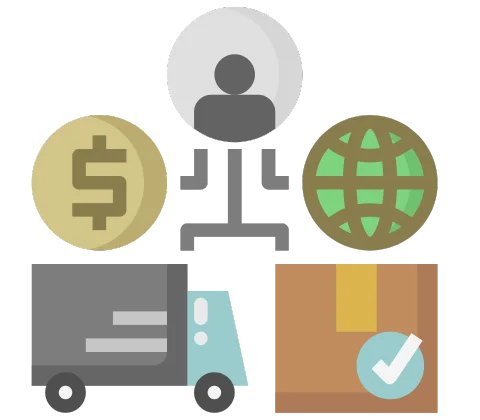
The U.S. Less-than-Truckload (LTL) freight market is projected to reach $114.03 billion in 2025, with an expected compound annual growth rate (CAGR) of 4.13%, reaching $139.63 billion by 2030.
LTL rates have seen notable year-over-year gains. As of April 2024, the Bureau of Labor Statistics’ Producer Price Index for LTL long-distance trucking rose by 8.2%.
The domestic segment accounts for approximately 77% of the U.S. LTL market value in 2024, underpinned by a strong infrastructure network and e-commerce growth.
Mexico has surpassed China as the largest exporter to the U.S., with Mexican exports reaching $475.6 billion in 2023-a 5% increase from 2022-prompting carriers to expand cross-border services.
The transportation and storage sector is projected to add nearly 570,000 new jobs from 2022 to 2032, with warehousing and last-mile delivery driving about 80% of this growth.
Sources: Mordor, LogisticsManagement
Chapter 11
LTL Freight Case Studies
Let’s cap off this guide with a set of LTL freight shipping case studies.
Specifically, you’ll see how shippers saved money leveraging the LTL shipping model with 3PL.

Case Study #1
How Did a Shipper Deliver Goods and Save $1,408,540 Using LTL Shipping?
A U.S.-based jacquard fabric manufacturer had multiple production facilities across NC, TX, and MA. They served home furnishing, auto interiors, and office markets. After being acquired, they transitioned from an in-house private fleet model to outsourced logistics.
A third-party logistics (3PL) provider analyzed around 1,874 freight invoices over two months. They forecasted an annual transport spend of $3.4 million. Expenses were divided across modes such as:
- Intra-plant shuttle: 53.38%
- Expedited shipping: 20.88%
- Intra-state and regional LTL: ~20%
Using that 3PL’s RFP cost database, they benchmarked current freight spend against potential rates from 44 qualified carriers. Findings showed:
- Estimated savings: $957,855/year (28.2%)
- Optimized carrier mix: 8 core carriers selected
Interviews revealed inefficient shuttle operations, with trucks running at low capacity. The 3PL restructured routes based on actual production needs using a Just-In-Time (JIT) model and cut the extra costs.
Case Study #2
How did a sportswear manufacturer reduce its LTL (Less Than Truckload) shipping costs by 50% year-over-year?
A national sportswear manufacturer reduced its LTL (Less Than Truckload) shipping costs by 50% year-over-year with the help of a 3PL.
The Challenge
The client faced several logistics hurdles:
- High LTL freight costs
- Complex shipping processes
- Limited visibility into performance and spend
- A need for streamlined, scalable operations to support growth
The Solution
The 3PL provider, partnered with CoreTrust Connect, delivered:
- Access to competitive LTL carrier rates
- User-friendly booking tools for easier shipment management
- 24/7 customer support
- Detailed reporting tools for performance and cost tracking
The Results
- 50% reduction in LTL shipping costs
- Improved logistics efficiency
- Greater shipment visibility
- The client reinvested savings into key business initiatives

